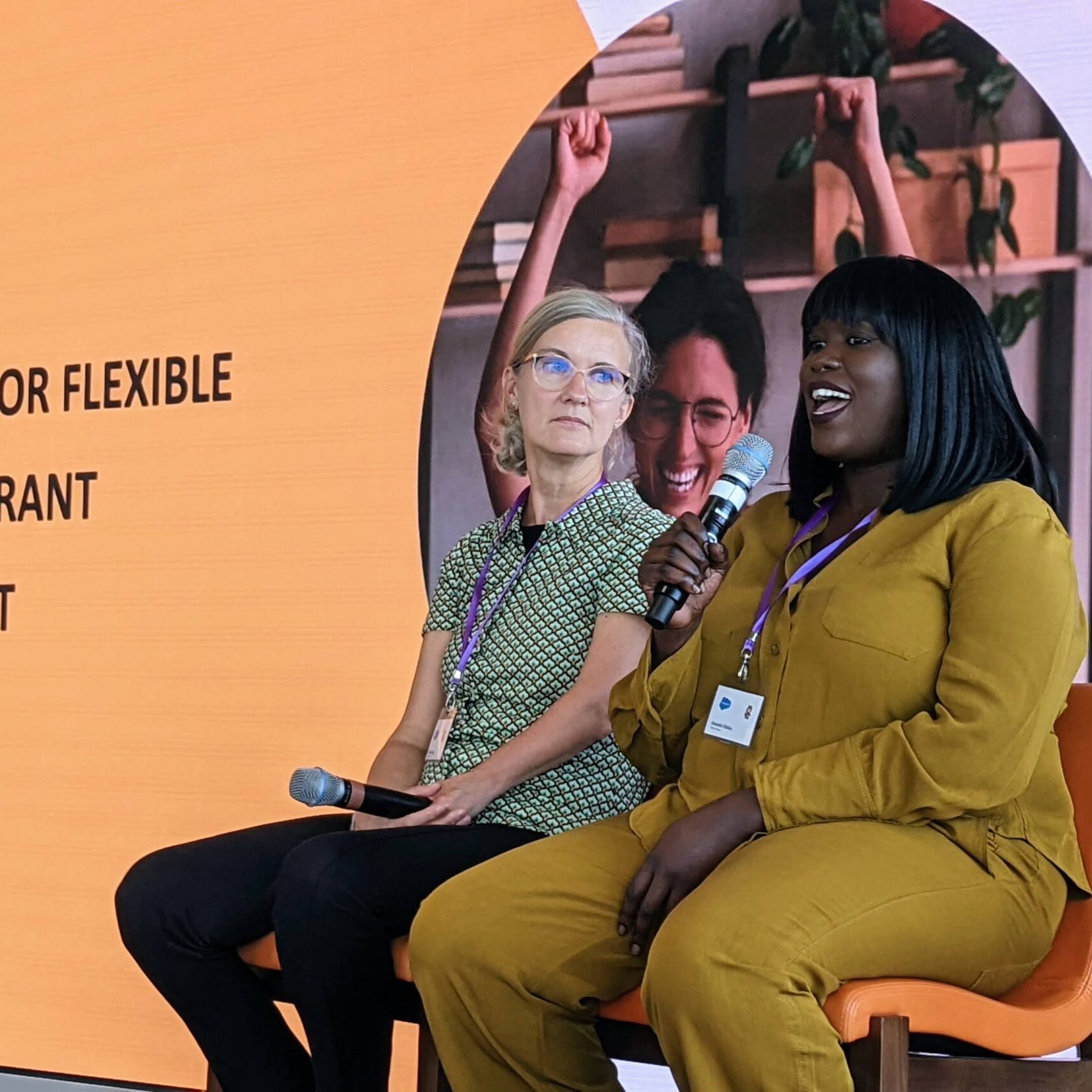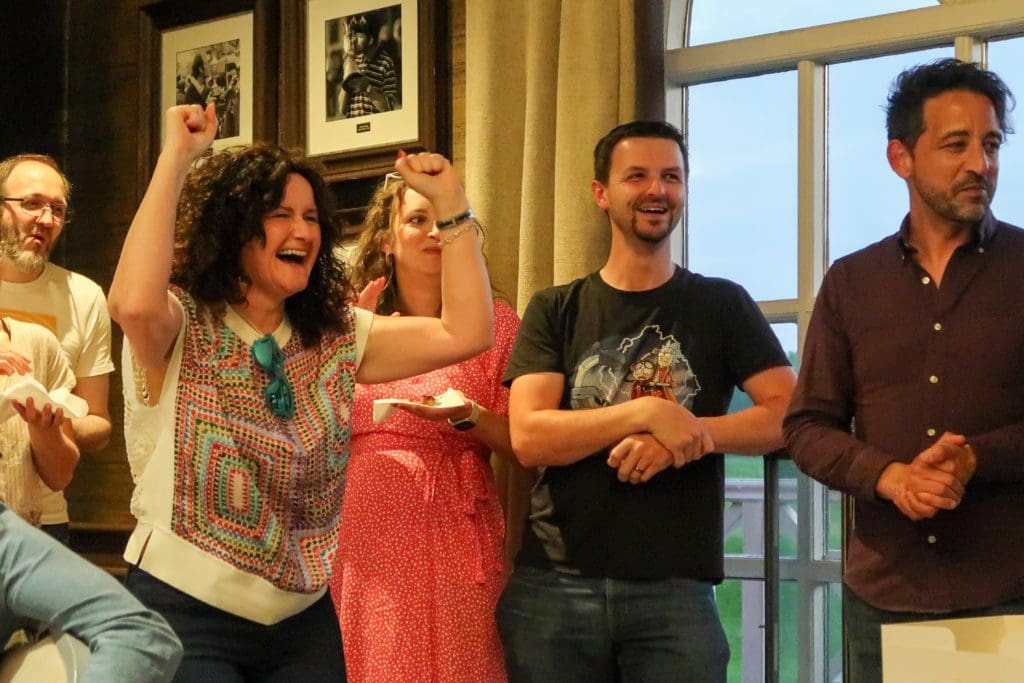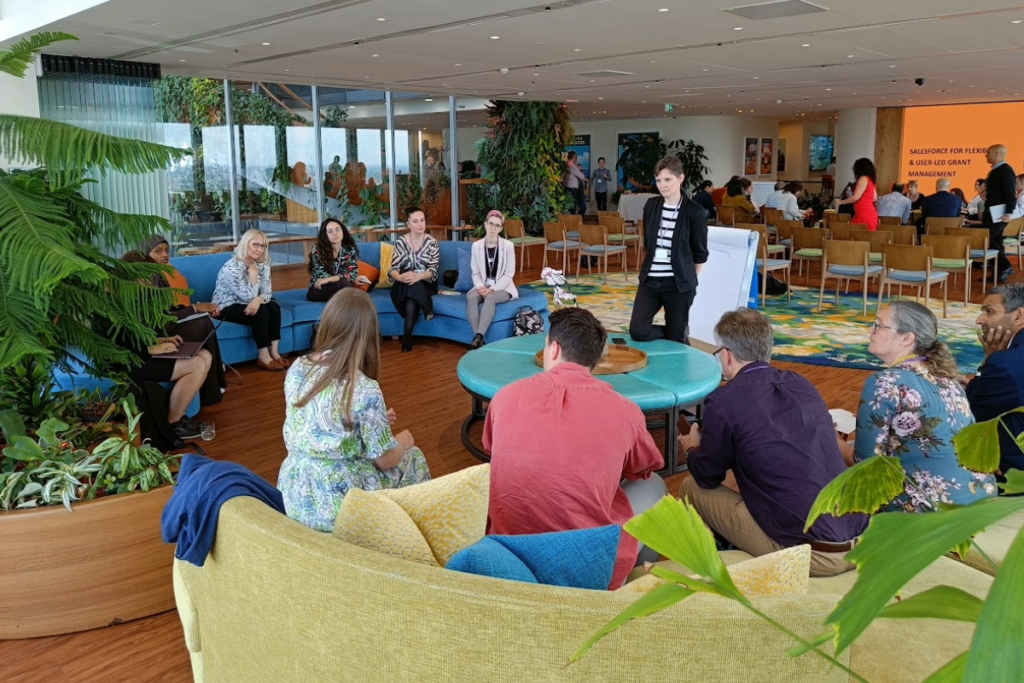A Salesforce project is also a people project
Last November, I had the privilege to host a roundtable at TechSmart NFP to discuss whether a tech-enabled change programme is actually a people project. It was a fascinating discussion and what was interesting was how many nonprofit organisations shared the same challenges and concerns, irrespective of the scale.
Common people related questions
As Salesforce consultants, we receive as many people-related questions as technology-related questions when organisations are considering Salesforce, such as:
- How much of our people’s time will be needed during the project?
- Who should be involved and how do we keep people informed and engaged?
- Should we engage an external Project Manager?
- How do we share knowledge when people have very different technical skills and learning preferences
- What technical skills do we need internally to maintain the solution after launch?
It is crucial that sufficient planning, effort (and budget!) is committed to the People elements of introducing Salesforce to your organisation. This blog explores some of the key considerations before, during and after the implementation project that have come from our observations and the experiences of nonprofits who have already been through the process.
BEFORE
Choose the right Project Manager
A good PM needs to have a range of qualities to manage scope, timings, budget AND people. There is no right or wrong in terms of whether you choose an internal or external PM, it’s really all about getting the right individual for the role. The table below summarises some of the key points to consider for each option.
External PM
- Ideally will have experience working in your sector or with similar organisations
- Factor in increased PM costs if there are change requests or the project timeline extends
- Make it clear from start that they should maintain a neutral stance and not go native
Internal PM
- Ensure that management recognise and support the impact of their involvement
- If they have a day job, check that project scope is not steered in favour of their role
- Recognise that they need the right skills to challenge, negotiate and manage multiple parties
Realistic project plan

Of course there are sometimes deadlines driving project milestones that cannot be avoided. But unrealistic project timings can put unnecessary pressure on your teams.
Project plans naturally ebb and flow but when you agree the baseline plan try to avoid key milestones coinciding with campaign launches or grant programme rounds; don’t schedule user testing during peak holiday times and factor in contingency time for any unforeseen delays.
Choose the right project team
We often get asked who should be on the project team. Involve too many people in the project team and you risk too many cooks spoiling the broth and delayed decision-making. Involve too few people and there is a chance people will feel left out
So how can you predict and plan for how much time will your team need to spend? I explored the ways in which you can save time during a Salesforce implementation project in a previous blog which you can read here.
- Make sure the key user teams are represented
- Ideally there is authority within the team to make decisions
- Don’t exclude members from role-specific sessions as it’s useful for everyone to see new processes in context
- Don’t underestimate the time required to attend workshops, provide content, participate in testing
_________________________________________________________________________________________________________________
DURING
Make the most of super-users
We always highly recommend that organisations identify internal super-users or champions. These are individuals that can help to drive user adoption within their teams, reduce reliance on external support and be involved in new process enhancements.
- Super-users often naturally bubble to the surface – they are hopefully enthusiastic and feel comfortable with the concept of embracing new technology
- Engage super-users to represent each team early on as they will become internal ambassadors to help with team engagement throughout the project and beyond
- As the solution takes shape, encourage super-users to get involved in documenting user guides or crib sheets – this will save on external costs and ensure the language, tone and style is appropriate
Recognise different training needs
Don’t forget that introducing new technology is a big change. People can feel daunted, apprehensive and out of their comfort zone. It is important to give as many users as possible early opportunities to see, play with and become comfortable with the new system and processes.
- Incorporate regular demos and pre-launch training sessions for super-users into the project plan
- Recognise that different individuals respond to different ways of learning; crib sheets, guides with screenshots, in context help content within the navigation itself, short videos to demonstrate key steps
- Consider assigning a buddy to less technical users to work alongside each other
- Schedule in a regular programme of training including refresher training and advanced training
- Encourage users to work through Trailhead (Salesforce engaging online tutorial site)
Keep up communications
It kind of applies to every situation in life or work but if you don’t keep people updated, they are bound to make assumptions. Keep the project team and the wider stakeholder groups up to speed with progress throughout. This will help to manage expectations, particularly if there is a significant change in scope or delay to go live. The method or channel of communication may vary depending on the size and culture of your organisation but the key is to make sure that they will be seen.
_________________________________________________________________________________________________________________
AFTER
Self-sufficiency
At Hyphen8 we are huge advocates of organisations becoming self-sufficient. This minimises reliance on (and costs associated with) an external partner AND fosters ownership and adoption of the solution. The decision to appoint a dedicated system administrator will depend on the roadmap of developments, size and scale of your solution and available budget. Some of the benefits of internal versus external are summarised below.
Internal System Administrator/s
- Can help to encourage user adoption and drive continual evolution
- Do not give too many users system admin profile without tight governance processes in place
- Should be Salesforce certified and keep up to date with new releases
- Will need to have good communication, prioritisation and business analysis skills
- Establish an internal process to log, prioritise and managing ongoing change requests
External partner support
- Provides a broad range of skilled resources on demand; developers, trainings, consultants
- Cost-effective way to boost resources as you only pay for the time that you use when you need it
- Access to more technical developer resources that you may not be able to justify recruiting internally
- Can advise on successes with similar organisations or how challenges were overcome
Listen to user feedback and ideas
One of the main reasons why organisations choose a platform like Salesforce is the flexibility to adapt and evolve. Keep up the momentum beyond the initial launch by inviting users to feed back continually on their experiences and ideas. The solution should not stand still so involve your people in shaping enhancements:
- Encourage your super-user group to meet regularly to compare notes and review / prioritise enhancements and user feedback
- Set up an internal process for users to submit and share their ideas
- Schedule in refresher training or advanced training sessions
- Consider regular user surveys as these can be a great way to gauge adoption levels, identify new training needs or gather ideas for improvements
The importance of considering the impact of and influence on People before, during and after your Salesforce project cannot be underestimated. Please do share experiences of what has worked well for you.






